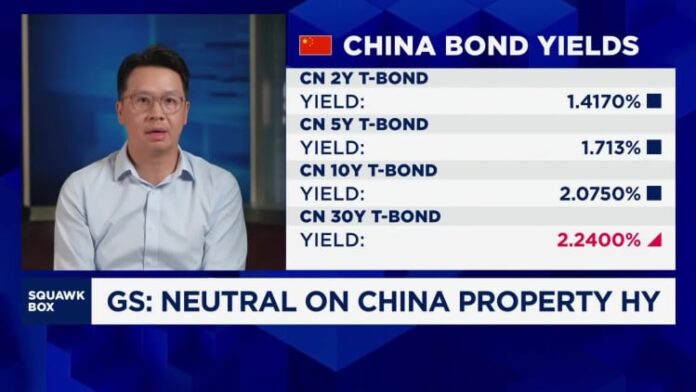Pictured here is a project in Shanghai under construction on November 4, 2024.
Cphoto | Future publishing | Getty Images
BEIJING – China reported strong retail sales growth and a decline in real estate investment in October on Friday, suggesting the country's recent stimulus measures have already helped bolster certain sectors of its flagging economy.
Retail sales rose 4.8% year over year, the National Bureau of Statistics said Friday. That was above the 3.8% forecast in a Reuters poll and up from 3.2% growth in September.
Industrial production rose by 5.3% compared to the previous year, falling short of expectations for growth of 5.6%. While fixed investment has increased by 3.4% year-on-year so far this year, it has fallen short of the forecast of 3.5%.
Real estate investment fell 10.3% in the January-October period compared to a year ago, sharper than the 10.1% decline in the January-September period, as the country's housing crisis worsened.
It was the sharpest decline since reporting a 10.9% decline for the year-to-date period ending August 2021, according to official data accessed through Wind Information.
National Bureau of Statistics spokesman Fu Linghui reiterated China's late September pledge to halt the real estate decline at a news conference on Friday, describing the sector as “actively recovering,” according to a CNBC translation of the Chinese.
Looking ahead, real estate investment is expected to stabilize and recover slightly over the next 12 to 18 months, said Bruce Pang, chief economist and head of research for Greater China at JLL.
He noted that the decline in new home sales in October compared to September had narrowed year to date. The value of new homes sold fell 20.9% in the first ten months of the year, better than the 22.7% decline in September.
Meanwhile, infrastructure and manufacturing investment rose slightly year-to-date from October compared to September.
The urban unemployment rate fell to 5% from 5.1% in September. Typically, the unemployment rate for young people aged 16 to 24 who are not in school is published a few days after the general unemployment rate. This figure had fallen to 17.6% in September from a record high of 18.8% in August.
The statistics office attributed the improvement in key economic indicators to the “acceleration” of existing measures and the “introduction of a series of gradual measures in October.”
However, it warned of continued headwinds at home and abroad and urged the country to “double” its policy implementation efforts to meet the annual growth target.
Chinese authorities have announced increased stimulus packages since late September, leading to a rally in stocks. The central bank has reduced interest rates and extended existing real estate support.
On the fiscal front, the Finance Ministry last week announced a five-year, 10 trillion yuan ($1.4 trillion) program to address local governments' debt problems and suggested there could be more fiscal support next year .
Manufacturing surveys last month pointed to a pick-up in activity, while exports rose at their fastest pace in more than a year.
However, imports fell as domestic demand remained weak. The core consumer price index, which excludes more volatile food and energy prices, rose 0.2% in October from a year earlier, slightly better than September's 0.1% rise.
Beyond a trade-in program to boost car and home appliance sales, Beijing's stimulus measures are not aimed directly at consumers.
China's Golden Week holiday in early October confirmed a trend toward more cautious consumer spending, but several consultants said sales during the recently concluded Singles Day shopping festival exceeded low expectations.
The country's gross domestic product grew by 4.8% in the first three quarters of the year. The country has set itself a growth target of around 5% for the year.


















